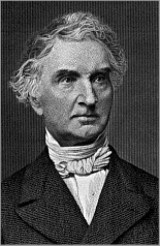
History
Sodium benzoate is the sodium salt of benzoic acid. In acidic conditions the sodium is replaced by a hydrogen and benzoic acid is formed. Hence when put in alkaline conditions (e.g. in a NaOH solution) the salt is reformed.
The discovery of sodium benzoate therefore coincides with the discovery of benzoic acid (E210).
Benzoic acid was discovered in the 1500's. Gum benzoin was dry distilled by Nostradamus (1556) (pictured left), by Girolamo Ruscelli (1560) and Blaise de Vigenère (1596) (pictured right).


Taken from: http://www.activemind.com/Mysterious/Topics/Nostradamus/index.html
Taken from: http://en.wikipedia.org/wiki/Image:Vigenere.jpg
Gum benzoin is the term used to describe the resinous product obtained from styrax trees. The genus styrax includes about 130 species of trees and shrubs which grow in tropical and temperate climates. The term gum is not really appropriate though because benzoin is firstly not water-soluble, nor is it a polysaccharide!
The structure was finally determined by Justus von Liebig (below, left) and Friedrich Wöhler (below, right) nearly 250 years later in 1832.


Taken from: http://en.wikipedia.org/wiki/Justus_von_Liebig
Taken from: http://en.wikipedia.org/wiki/Friedrich_Woehler
Sodium benzoate has been used as a preservative since the early 1900's. Since then it has been used more and more until studies (particularly in the early 1990's) showed that large quantities are not advisable. Is is safe?
- Nostradamus is far more commonly known for his prophecies, his book Les Propheties, was first published in 1555 had numerous other editions printed in many languages. Sadly the only edition still around today is the omnibus edition published in 1568, after his death.
- Girolamo Ruscelli (who sadly I can find no picture of) worked for most of his life under the pseudonym Alessio Piemontese, or more commonly, the latinized version of Alexius Pedemontanus. He wrote several books, again translated into many languages, and constructed a rather impressive map of Italy.
- Blaise de Vigenère had the Vigenère cipher named after him in the 19th century, this was completely wrong, as in actual fact he had nothing to do with its discovery!
- Liebig and Wöhler was a partnership that changed the face of organic chemistry forever. They built up the systematic system of atoms and bonds which we still use today.